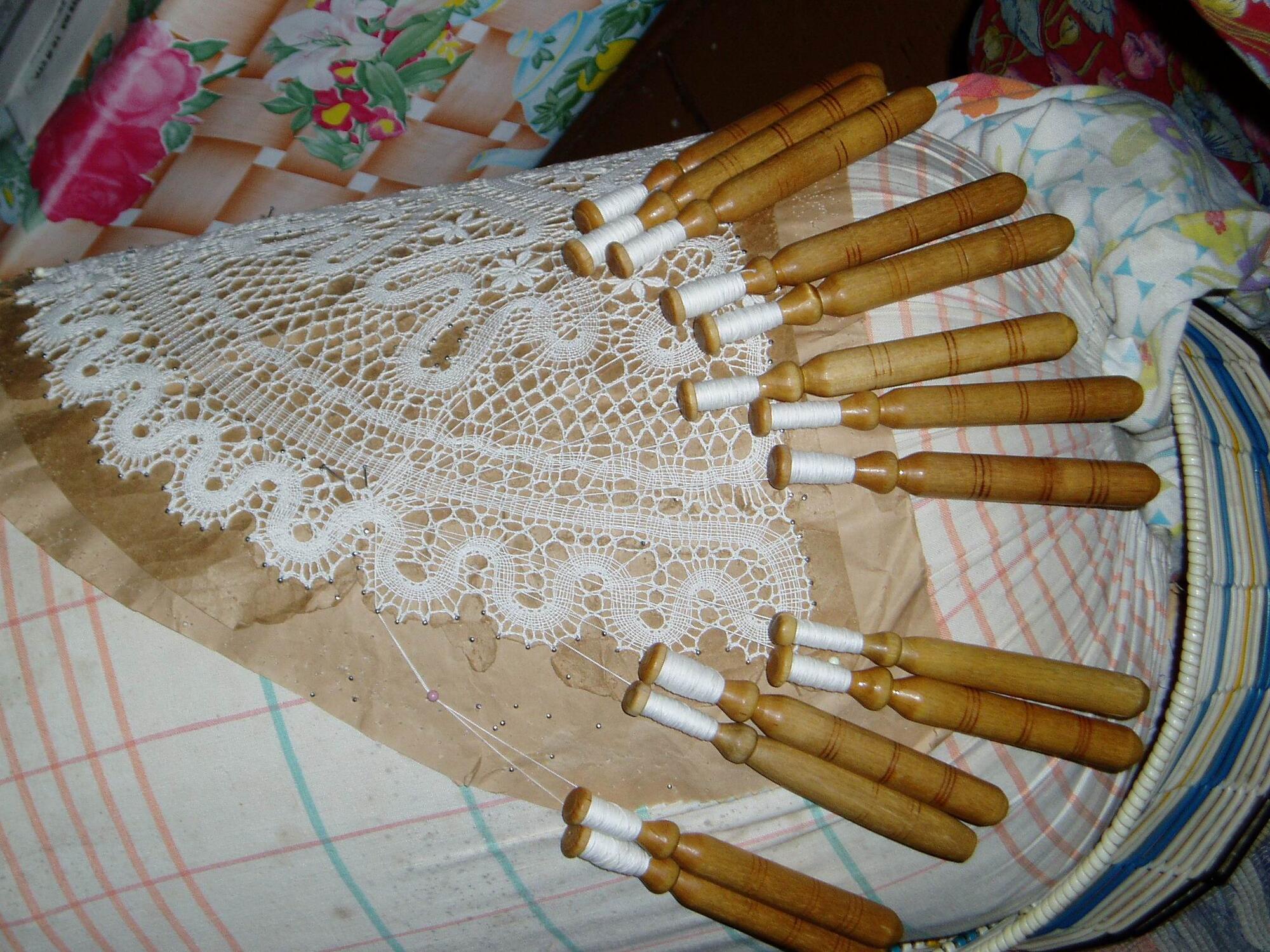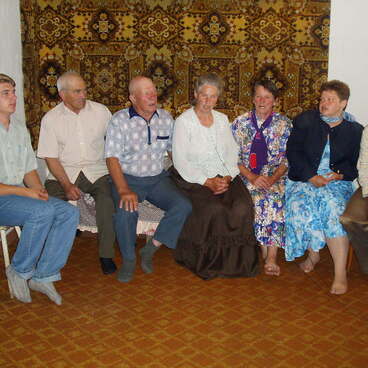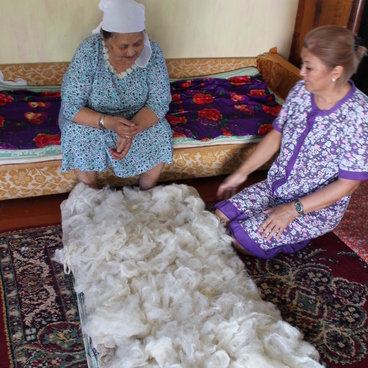The historically established name of the Kirish lace — zahozhskoe — is associated with the traditional name of the area Zakhozha (or Zakhozhi) in the Leningrad region. In the 19th and early 20th centuries, the administrative divisions, the names of rural communities and subdivisions changed, but the villages continued to belong to the parish of the Church of John the Baptist in the village of Motohovo. These villages became the center of lace craft.
Researchers have been unable to establish when Zakhozhi lace making first appeared. A local legend says that “the local residents were taught lace-making by the wives of bricklayers, natives of Vologda, who were building a church in Motokhovo” in the 1850s. The lacemakers themselves say their craft is “old” — probably, it appeared no later than the beginning of the 19th century.
Lace was created by twisting threads wound on bobbins — the locals called them “sticks”. The craftswomen created elaborate patterns on special roller-shaped pillows of different sizes. The lacemakers of Zakhozha also gave their own name to this object — they called it a “ball”.
The craftswomen used white linen, less often black silk threads, and later they began to use colored (red, crimson, yellow, green, and blue) threads for manufacturing lace. Not only women, but also men made lace.
In the 1990s, the craft began to decline. In the early 2000s, a lace-making workshop was opened. The restoration of “skolki” — vintage lace patterns — started and courses on Zachozhi lace making were opened.
Researchers have been unable to establish when Zakhozhi lace making first appeared. A local legend says that “the local residents were taught lace-making by the wives of bricklayers, natives of Vologda, who were building a church in Motokhovo” in the 1850s. The lacemakers themselves say their craft is “old” — probably, it appeared no later than the beginning of the 19th century.
Lace was created by twisting threads wound on bobbins — the locals called them “sticks”. The craftswomen created elaborate patterns on special roller-shaped pillows of different sizes. The lacemakers of Zakhozha also gave their own name to this object — they called it a “ball”.
The craftswomen used white linen, less often black silk threads, and later they began to use colored (red, crimson, yellow, green, and blue) threads for manufacturing lace. Not only women, but also men made lace.
In the 1990s, the craft began to decline. In the early 2000s, a lace-making workshop was opened. The restoration of “skolki” — vintage lace patterns — started and courses on Zachozhi lace making were opened.



